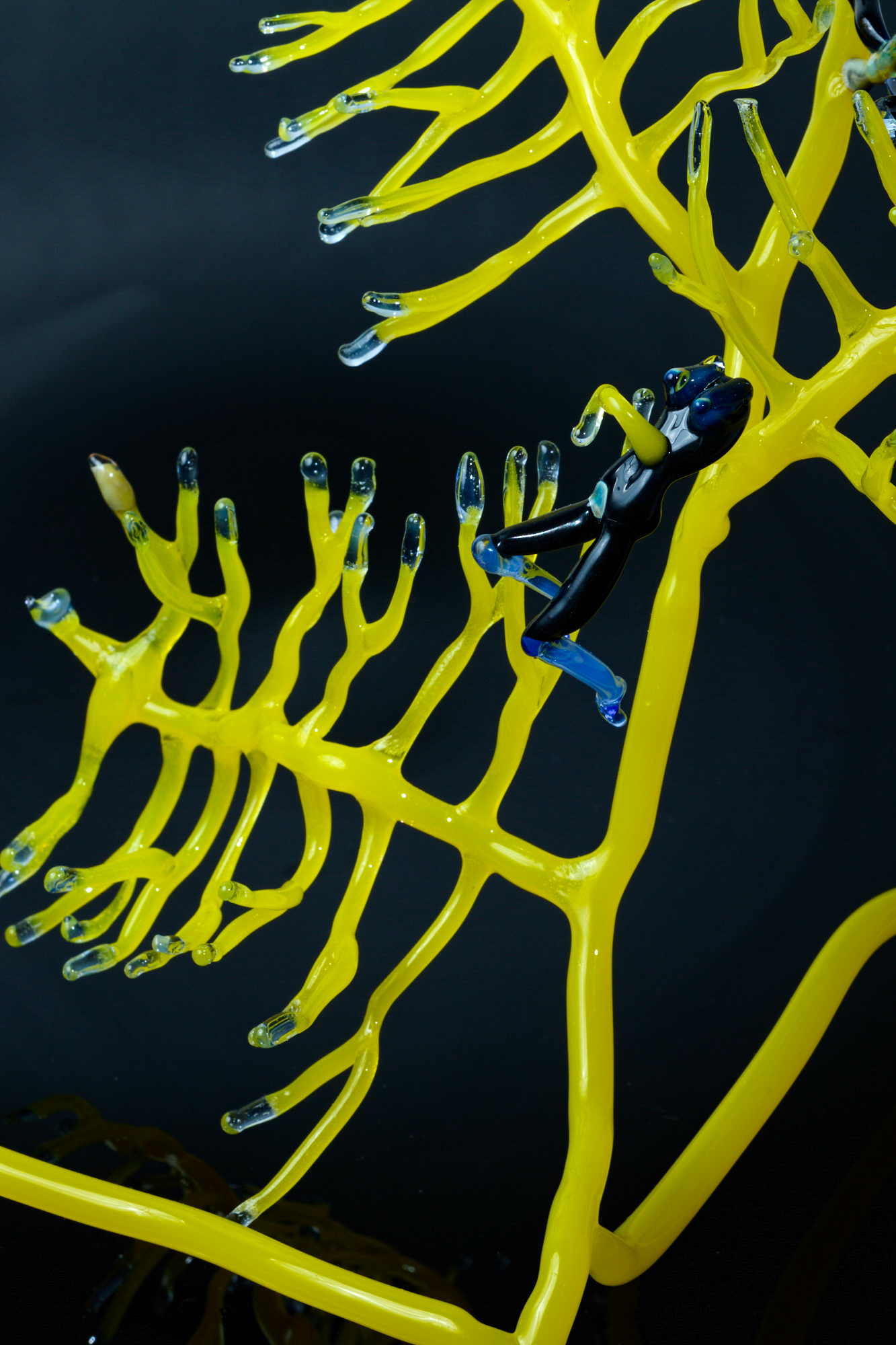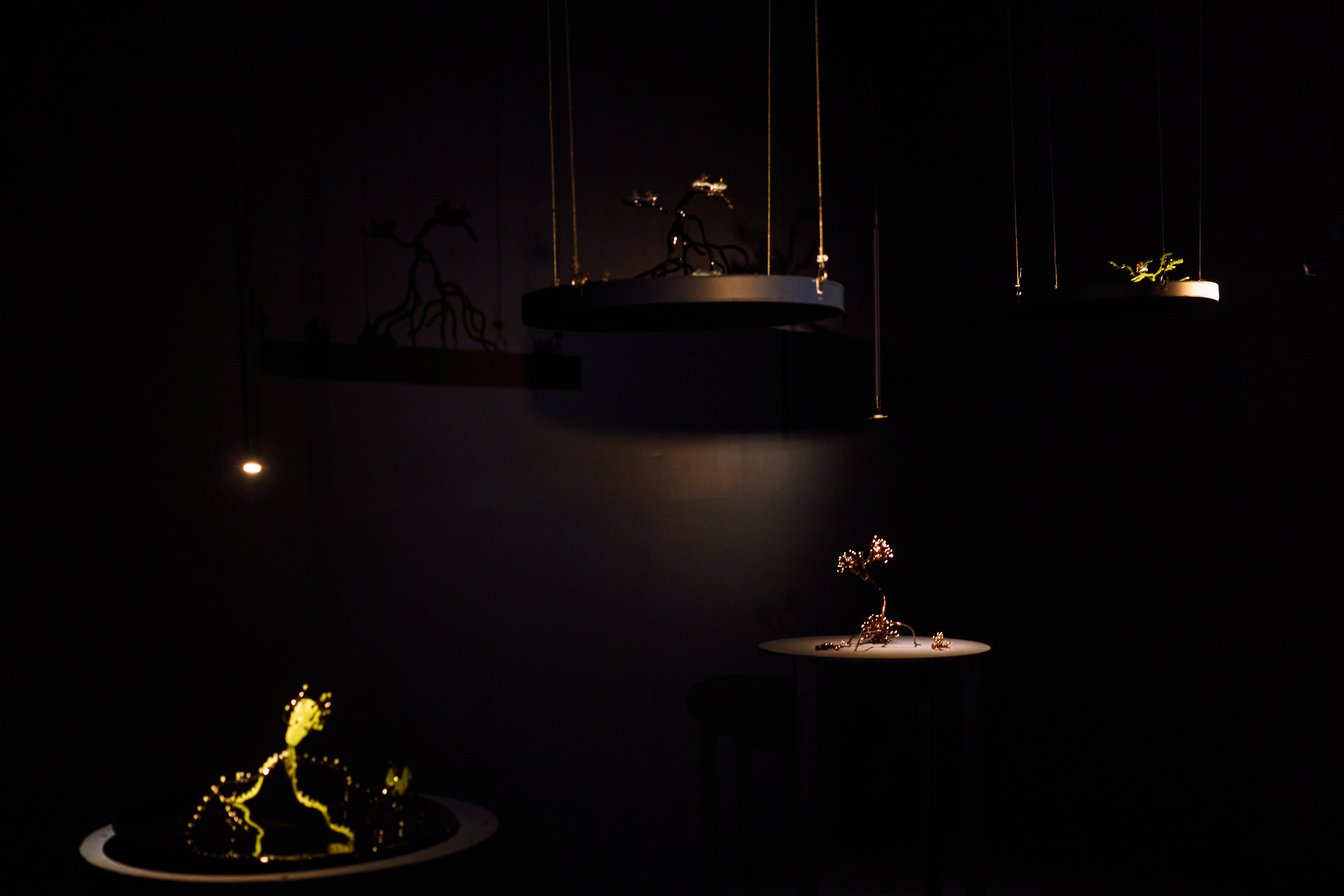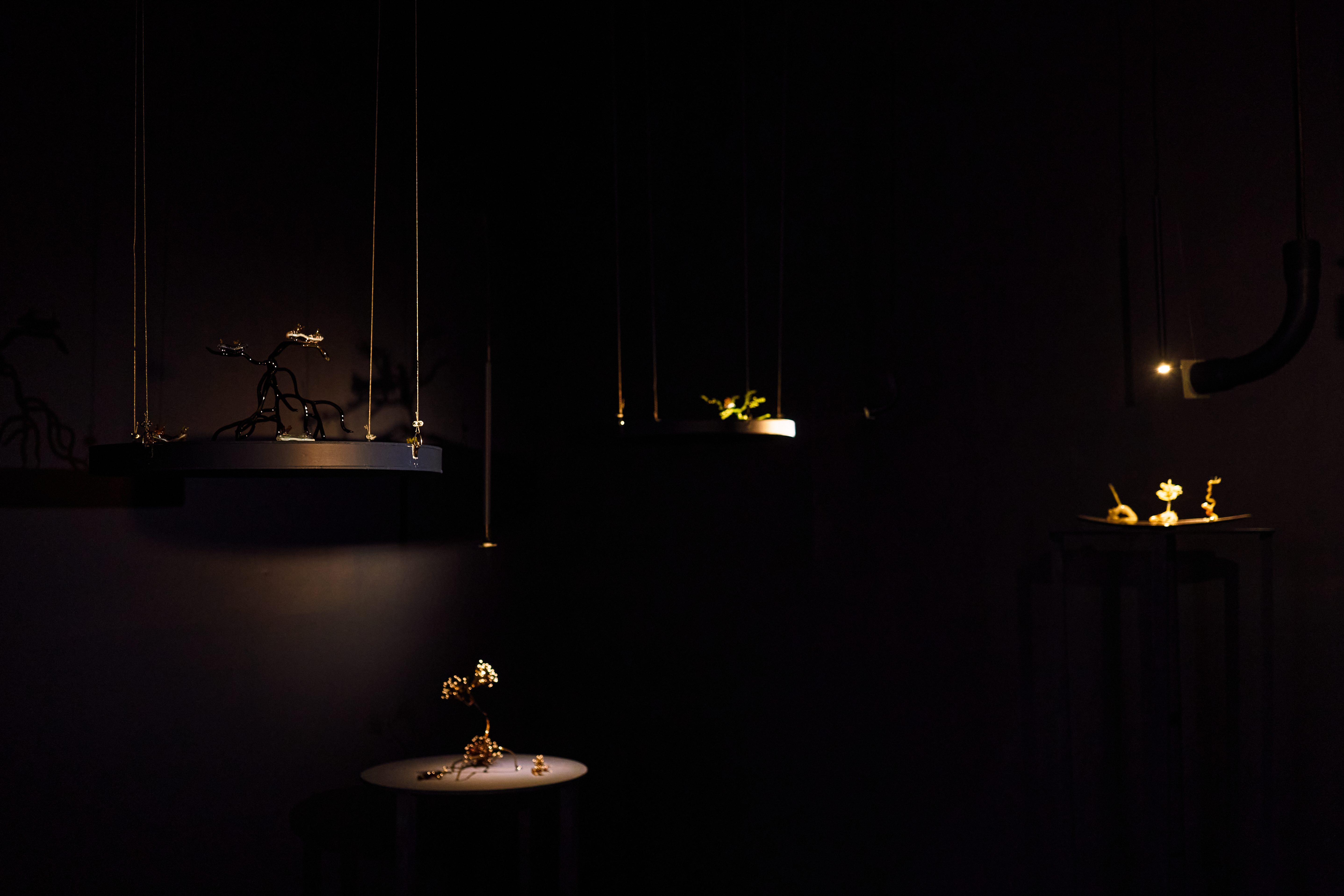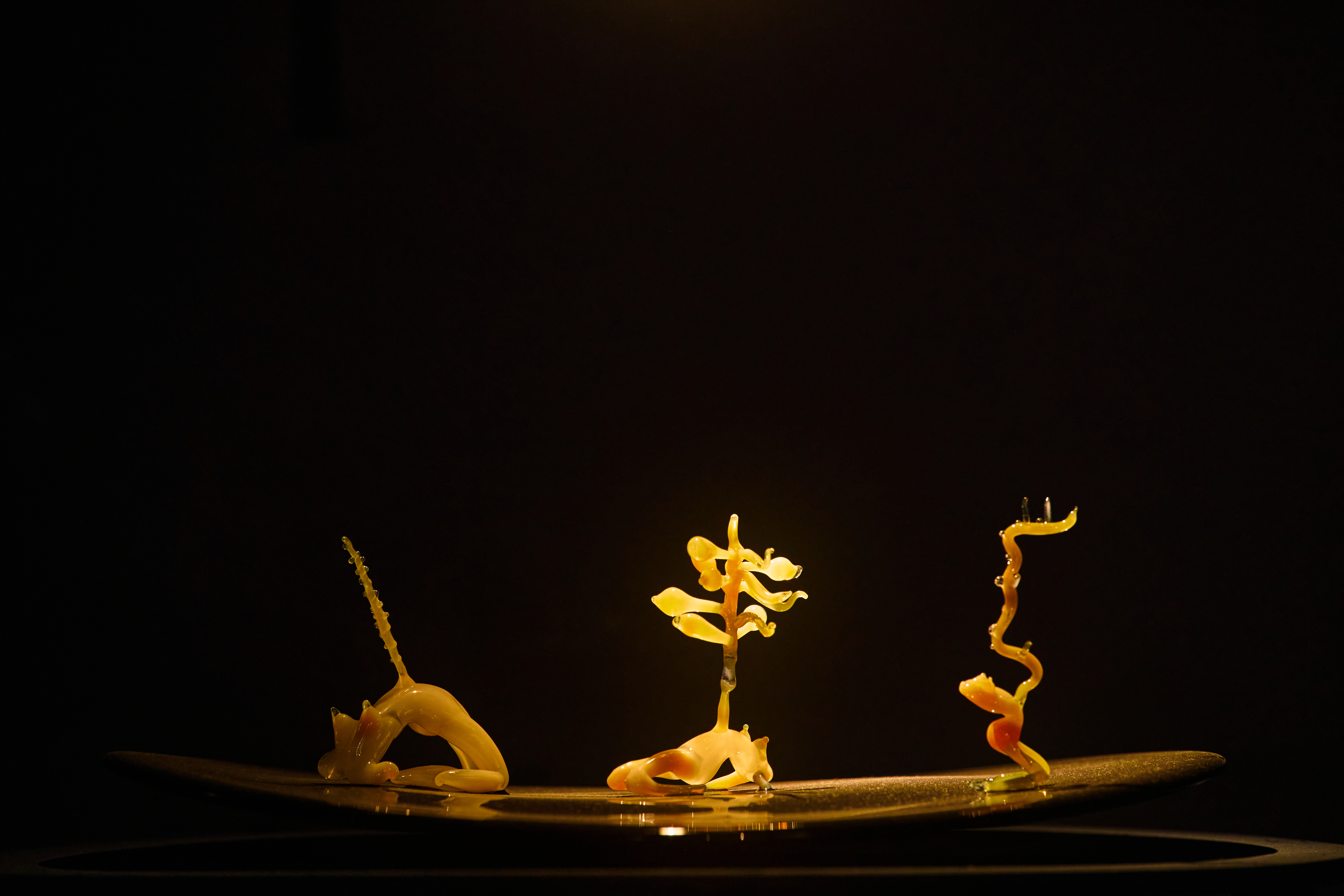




























In The Rise of the Medusa, Goldie Poblador and her collaborators construct an immersive exhibition that initially mourns the Verde Island Passage’s irreparable ecological devastation, caused by 2023 oil spills. Through different sensorial elements of sight, smell, and sound, Poblador and curator Erwin Romulo invite the viewer to trace the marine environment’s ecological stages as it recovers from the man-made catastrophe. Artist and perfumer M Dougherty creates three scents – Oil Slick, Dead Coral, and Verde – that accompany five sound sculptures by sound artist and composer Ben Richter, which are layered over by sound artist Arvin Nogueras aka Caliph8.
Poblador’s practice centres on female archetypes such as the maiden but has recently shifted her focus to the monstrous feminine. This concept by Barbara Creed argues that female monsters in film reflect societal fears about women. Medusa’s petrifying regard, then, reflexively mirrors the patriarchy’s anxiety about itself. In 2023, the same year as the Verde Island Passage disaster, Poblador was punched in the face in a New York City subway as bystanders failed to help her. In the aftermath, the artist fell into what she describes as the ‘abyss’ and grappled with the monstrous side of her that might have always been there: crazy, angry, ugly – familiar accusations hurled at women. Building on Hélène Cixous’s “The Laugh of the Medusa,” which asserts women as complex and resilient beings laughing despite adversity, The Rise of the Medusa parallels Poblador’s own reparative journey. Medusa is the monstrous feminine emerging from the wreckage – a symbol of female loss, rage, resilience, and prosperity.
The installation centres on a series of glass sculptures that merge the female body with invertebrate forms from the Verde Island Passage. The Rise of the Medusa is the second stage of Poblador’s Sea Anomaly series that first began in 2023 and has been shown in New York and Singapore. This body of work emerges from a studio residency at the Corning Museum of Glass in which Poblador studied the museum’s extensive collection of Leopold and Rudolf Blaschka invertebrate specimens. Poblador utilizes the duo’s specific glass-blowing technique to catalogue organic specimens, but complicates the practice’s colonializing standard of classification by fusing these creatures with sensual human forms. Here the artist also invokes Magwayen, the Philippine goddess of sea and death, as she becomes one with her ocean dwellers. This fusing further advocates for a shift from anthropocentric priorities that have wrought ecocide, towards a future informed by precolonial harmony with the earth.
Text by Marv Recinto
Exhibited for the Special Exhiibtions Section of Art Fair PH 2025
Photos by KC Maddox and Sela Gonzalez
Created in partnership with Mono8 Gallery
Lighting Design by Les Dickert
Exhibition Design by Gabrielle Lichauco and Rita Nazareno

